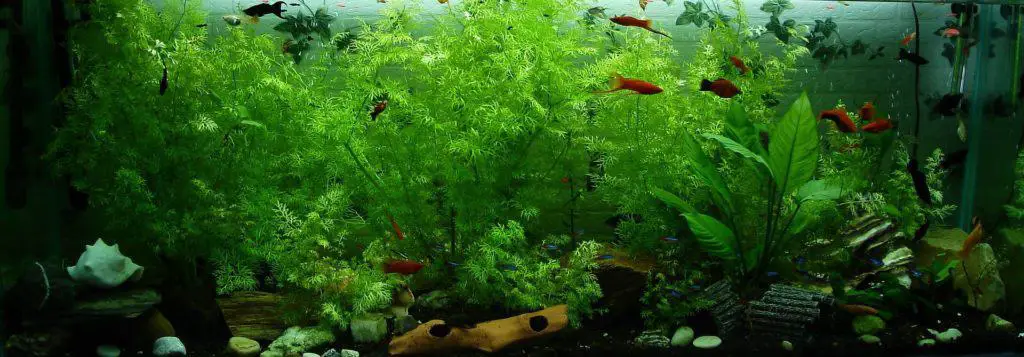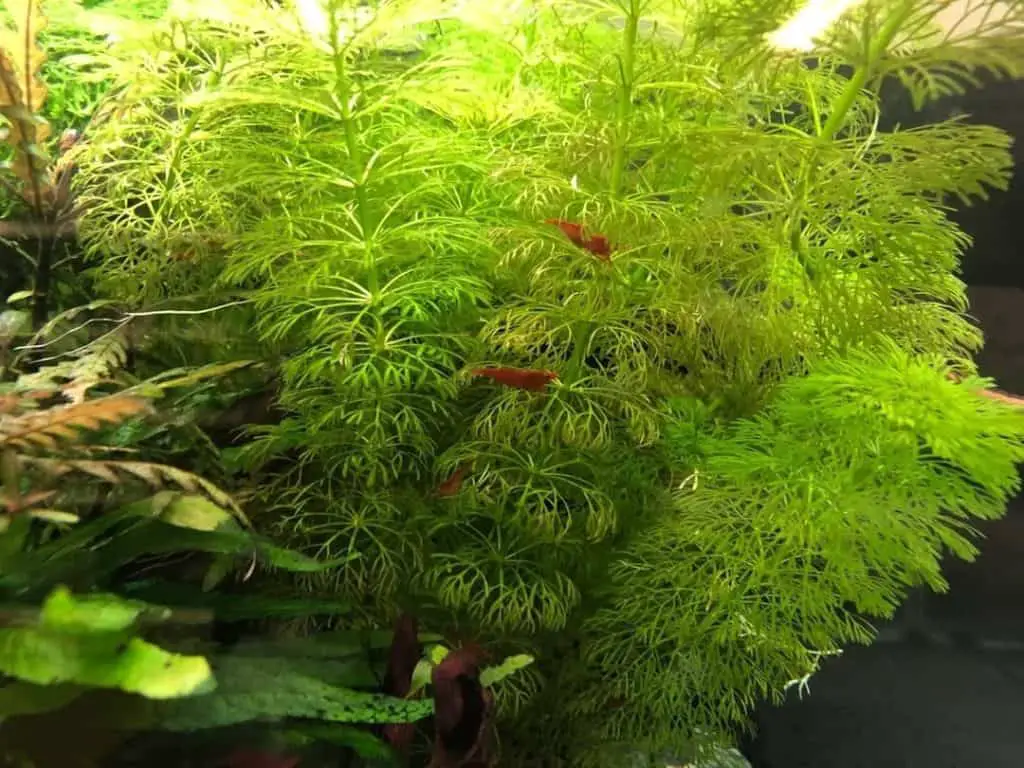When you have a planted aquarium in your home, you may be wondering if plants can eat fish waste. You may have heard that some plants can, but what does this mean? And how do they absorb ammonia and nitrite from fish waste?
While aquarium plants do not directly eat fish waste, they play an essential role in the aquarium ecosystem by helping break down and process waste products. This helps keep the water clean and healthy for fish and plants.
Here are some examples of plants that can be beneficial for your aquarium. Read on to learn more. The best part about aquarium plants is that they are incredibly beneficial for the aquarium.
Does a Plant Eat Fish Waste?
Plants do not eat fish waste. Fish waste is broken down by bacteria in the aquarium and used as a plant food source.
If you have a fish tank and have wondered whether you should feed your plants with their poop, you’re not alone. Aquaponic gardening has used fish poop as an organic fertilizer for many years, and this waste is rich in micronutrients and naturally derived NPK nutrients.
What’s excellent about fish poop is that it is full of biological activity, including many essential plant nutrients. In addition, fish poop contains numerous micronutrients that plants need for healthy growth. Therefore, feeding plants with fish waste feeds your plants and adds beneficial biological life to your soil.
Aquatic plants live on fish waste or nutrients available in the soil or substrate.
Some algae eaters will consume fish waste, including plecos, scats, and wood shrimp. Freshwater clams and blood worms consume the waste of other animals in the tank. Everything that eats poo will eventually produce waste, including fish poop.
In the end, beneficial bacteria will break down the waste into nutrients that the plants in your aquarium can absorb.

Does Fish Poop Benefit Aquarium Plants?
Fish poop is high in nitrogen and phosphorous, two essential nutrients for aquarium plants. Fish poop is often considered a “garden fertilizer” because it benefits plants.
If you have an aquarium with live plants, adding fish poop to the water will help them grow better. Of course, you don’t want to add too much poop to the tank, or your plants will start to grow too quickly and may become overcrowded. A little bit of fish poop goes a long way in helping aquarium plants thrive!
The Reason There Is so Much Poop in Your Fish Tank
There could be several reasons your fish tank is so dirty, and one of the most common reasons is overfeeding your fish. When you feed your fish more food than they can eat, the uneaten food will decompose in the water and create bacteria that will make the water cloudy.
In addition to overfeeding, another common cause of dirty tanks is poor water circulation. If the water isn’t circulating properly, it can’t properly cleanse itself and will become cloudy, or you can get an algae outbreak.

Does a Plant Absorb Ammonia and Nitrite from Fish Waste?
Plants can play an essential role in the aquarium by absorbing ammonia and nitrite from fish waste. This is beneficial for the health of the fish as it helps to keep levels of these toxins low in the water. Additionally, this process can help to improve the overall quality of the water in an aquarium.
The process of breaking down ammonia into nitrites is called nitrification. Biological filters process waste metabolized by bacteria to nitrites and nitrates. Ammonia levels in the aquarium are often high due to too many fish or overfeeding, and plants and algae utilize these nitrogen-fixing compounds.
Aquarium plants help the nitrogen cycle in the tank by absorbing ammonia and nitrite from the water and contributing them to the ecosystem. Fish waste, especially ammonia, is broken down by Nitrobacter colonies found in the water. This is another way in which aquatic plants contribute to the nitrogen cycle. Ammonia is easier to use by plants than nitrites and nitrates, and plants need nitrogen for photosynthesis.
Aquarium waste comprises several components: fish, plants, and uneaten food. Ammonia is toxic to fish, but nitrate is not, and it is broken down further into nitrite and nitrate by bacteria in the aquarium’s biofilter. As a result, algae bloom indicates a high nitrate level, killing your fish.
Ammonia and nitrites are the most common killers of aquarium fish, but there are ways to reduce their presence. Feed your fish sparingly to prevent nitrite buildup, and perform periodic partial water changes (up to 20%) of the total volume.
Use well-aged water for partial water changes. Never use tap water directly for your aquarium. However, if you must use tap water, ensure it is well-aged or use a water conditioner.
You can expect a healthy nitrate and nitrite level if you don’t have too many aquarium animals. Excessive nitrate levels can stress your fish, making them more susceptible to illnesses. Aquatic plants are a great solution to control nitrate levels in the aquarium. Some aquatic plants absorb nitrate and nitrite from fish waste and produce oxygen.
Aquarium plants can help keep the aquarium environment healthy and provide additional natural food sources for some fish species. They also offer higher oxygen levels, which are essential for the health of your fish. Therefore, choosing plants can differentiate between a healthy aquarium and a tank full of harmful algae. There are many nutrient input and output options, and the best ones are available for you to choose from.
When attempting to control nitrates in your fish tank, the best thing you can do is perform partial water changes. Change the dirty water with clean, dechlorinated water every few days. This will remove nitrates from the water and help your fish thrive. In addition, aquarium plants also metabolize nitrogen compounds, which are harmful to fish and other invertebrates.
Why a Good Water Conditioner Is Essential
While safe for human consumption, tap water can often contain high chlorine levels and other harmful chemicals to fish. For this reason, using a water conditioner when performing water changes in your aquarium is vital. A good water conditioner will neutralize these chemicals and make the tap water safe for your fish.



